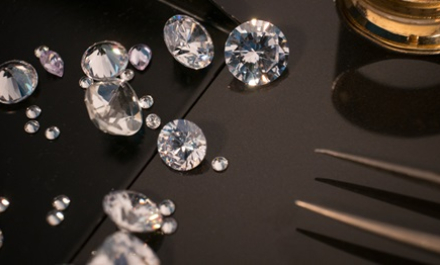Transparency, traceability and technology are imperative for the diamond industry to thrive in the post-pandemic era, according to World Federation of Diamond Bourses (WFDB) President Yoram Dvash.
Speaking at the 40th World Diamond Congress on March 29, Dvash said the global diamond industry needed to adapt to changing customer preferences and business conditions.
“In an era of social media, every celebrity or influencer with millions of followers can change the world – or at least change trends. We must be aware of the changes. We must study them and note how they influence our businesses. And we must take steps to adapt,” said Dvash, who was reelected as WFDB president at the congress held during the Israel International Diamond Week from March 27 to 30.
He noted that the new consumers – Generations Y and Z – are increasingly demanding transparency and traceability. Though they live in a virtual world of social media, they are also down to earth, well informed and want to make sure the diamonds they buy do no harm to society and to the earth.
“Trends that begin with younger consumers quickly spread to more and more segments of the market. Our industry, which has always been closed and secretive, must open itself more and more to adapt to the demands of the new consumers,” Dvash explained.
Fundamental changes are also sweeping the diamond retail market. Large brands and chains with substantial marketing budgets are cornering the market, which was once dominated by smaller mom-and-pop stores.
“The massive investments (large chains) can make in advertising bring results. Major brands are forcing small stores to close. While this can create greater demand for diamonds, the industry will be concentrated in very few hands. Those with strong brands will grow and the smaller stores will find themselves out of business,” Dvash said.
The diamond trade likewise faces challenges from lab-grown diamonds (LGDs) and Russian-sourced goods.
But while LGDs have made significant advances in the US market, they were not as successful in China where consumers were said to prefer natural diamonds even if these may be smaller, Dvash pointed out.
“LGDs bring consumers to the market who perhaps would never have bought diamonds before. On the other hand, they are eating into the sales of natural diamonds. Perhaps in five to 10 years, these consumers will buy natural diamonds. But if the prices of LGDs continue to decline, natural and lab-grown diamonds will likely become two separate categories that can exist side by side,” the WFDB official said.
Meanwhile, the coronavirus pandemic shut down the industry for years but, in its wake, released a huge wave of demand and rising prices. However, the Russia-Ukraine war, which has led to inflation and rising interest rates, is causing US consumers to suspend spending until more certain times, according to Dvash.
While the diamond industry has always been resilient, it now needs to recognise new trends, anticipate them and make adjustments. New technologies must be encouraged and embraced, he continued. AI-led certification and laser-driven polished diamond manufacturing are among the technological advances that are poised to fundamentally change the diamond business.
“We must accept that our industry is going to be different from what it had been for generations. And this is good,” said Dvash.
- Full story in JNA May/June 2023 issue. Email [email protected] to subscribe.









